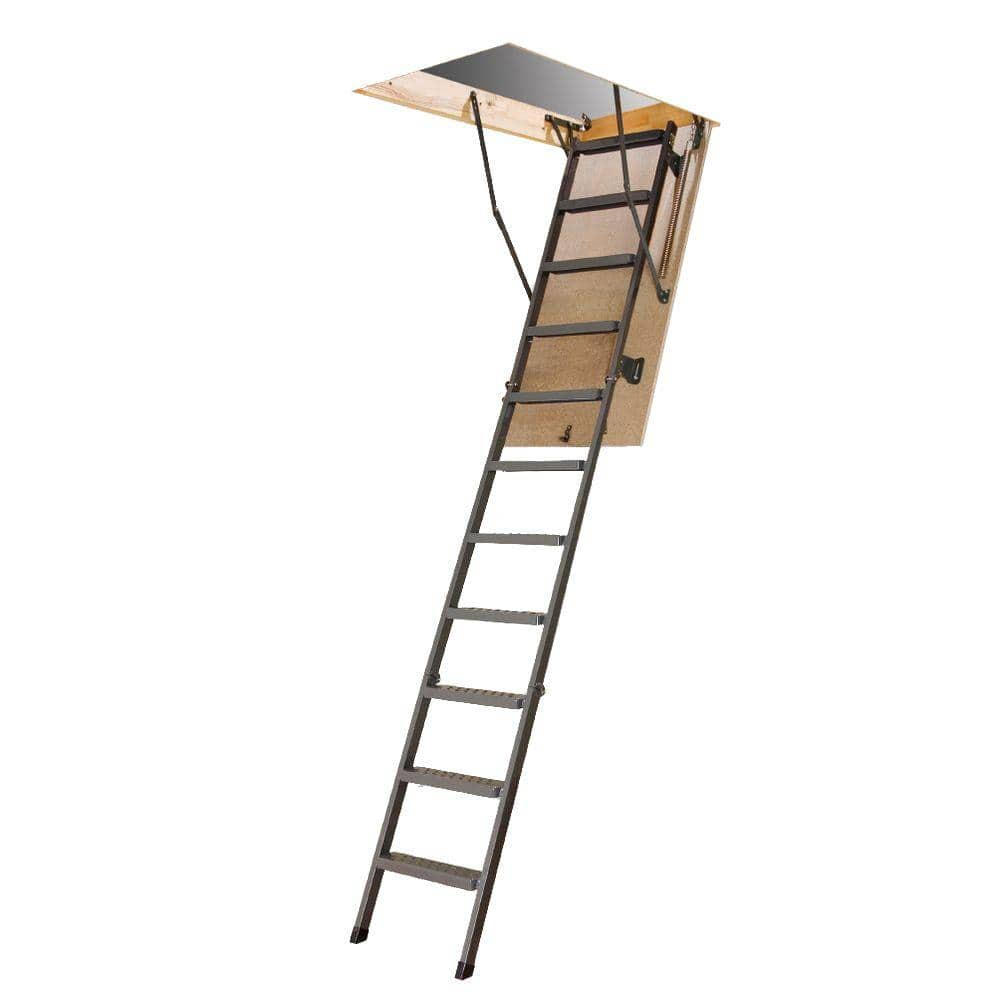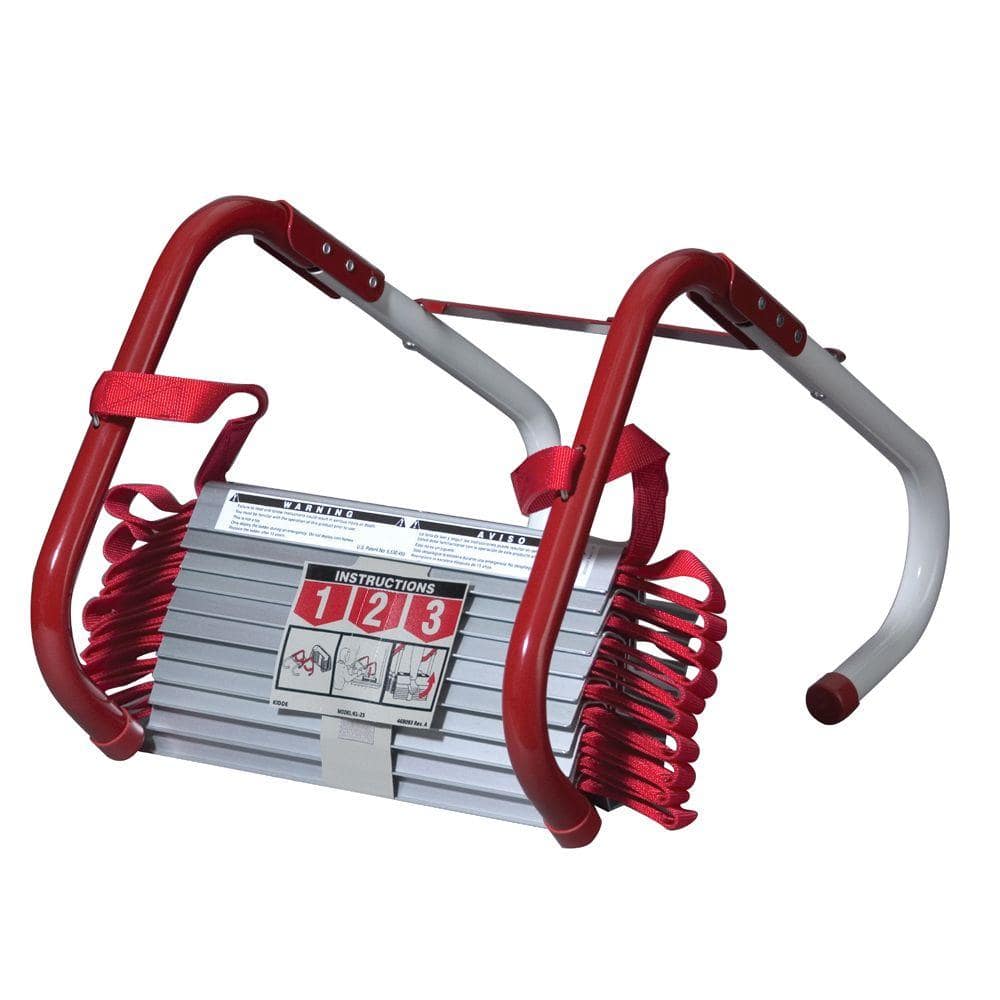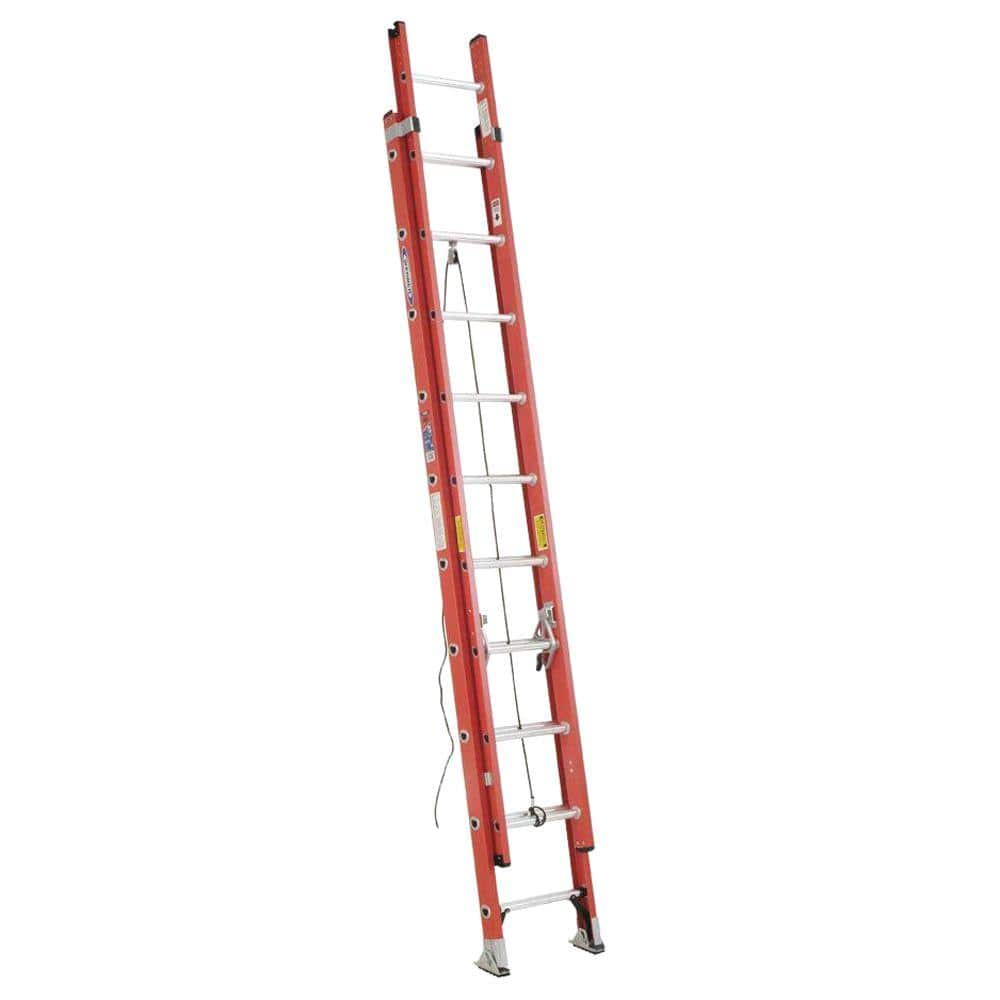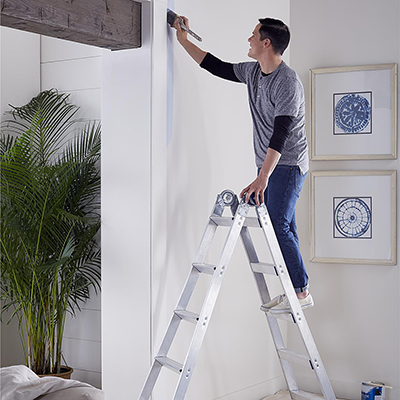Ladder Buying Guide

Last updated September 7, 2023
Ladders are one of the most important tools you can have as a homeowner. They come in handy for reaching high areas for storage, cleaning, painting or maintenance. This buying guide highlights the many
types of ladders available and the best ladders for different tasks around your home.
Table of Contents
Ladder Heights and Reach
Step Ladders
Multi-Position Ladders
Straight Ladders
Extension Ladders
Attic Ladders
Ladder Heights and Reach
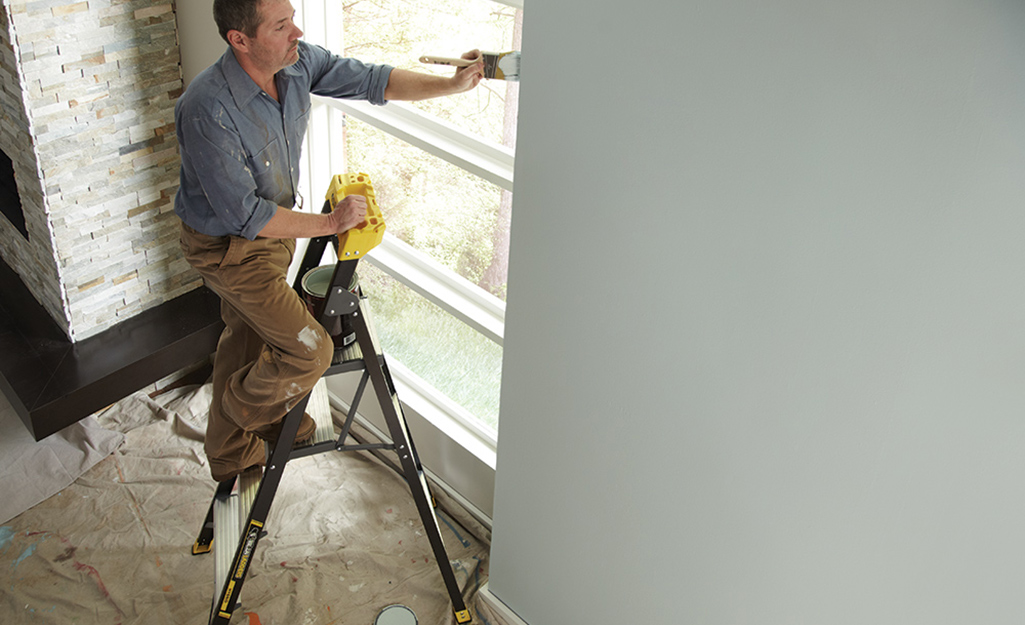
There are many different types of ladders to choose from to suit your needs, with many homeowners opting for more than one. The main purpose of ladders is to help you extend your reach. Certain kinds of ladders can extend your reach more than others, even if their heights are the same. For example, you can safely stand two steps down from the highest point of a step ladder. On an extension ladder, however, you should be four rungs down from the highest rung. If the step ladder and extension ladder are the same height, the step ladder will give you a higher reach than the extension ladder.
As we describe each kind of ladder, we’ll list the ladder’s estimated reach above ground. Keep the ladder heights and added reach in mind when choosing the best ladders for you.
This will help you do your job safely and efficiently.
Step Ladders
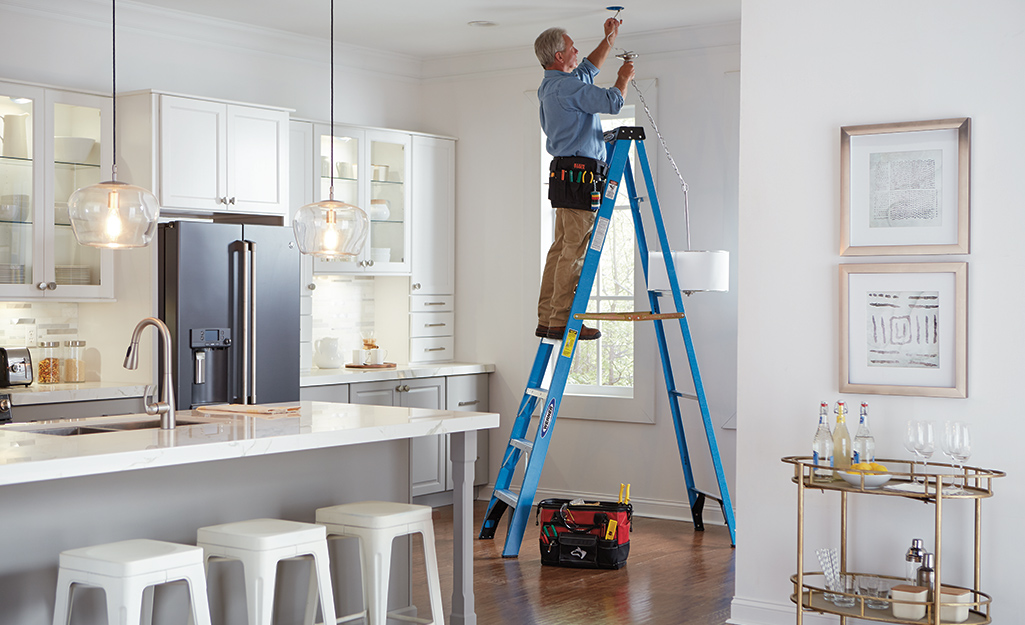
Step ladders are one of the most popular types of ladders. They have a self-supporting A-frame construction
and can be used anywhere, making them
handy for common household tasks.
Typically step ladders are used for indoor tasks, so they may not have the height and reach you need for exterior projects.
When choosing the best step ladder for your home, consider these additional features:
- A telescoping step ladder
has an adjustable frame. This is helpful when you need to use a ladder on stairs. - A twin step ladder has steps on both sides of the A-frame, allowing two people to use the ladder at once.
- A platform ladder is a step ladder that has a standing surface with safety railing at the top.
This gives you more reach than the average step ladder. - A podium ladder is a platform ladder with extra-large platforms and a longer guardrail. They expand your work zone by letting you face any direction to do your work.
Step ladder height = Estimated reach above the ground:
- 6-foot ladder = 10-foot reach
- 8-foot ladder = 12-foot reach
- 10-foot ladder = 14-foot reach
- 12-foot ladder = 16-foot reach
Multi-Position Ladders
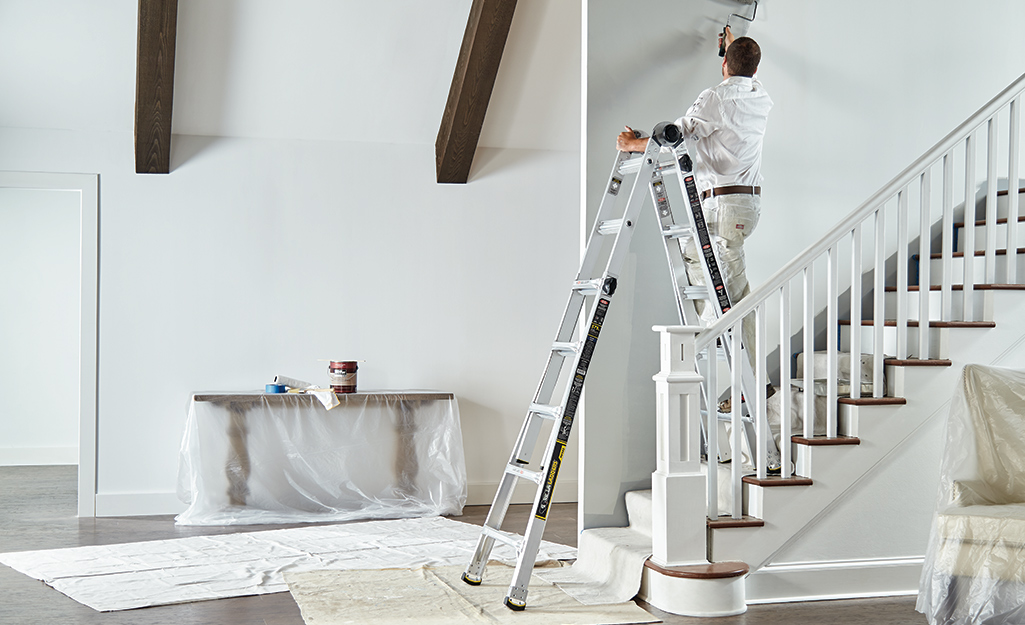
Multi-position ladders, or folding ladders,
are ladders that can be manipulated into any
position. Depending on how you adjust these ladders, you can set them up as a step ladder, extension ladder, scaffolding,
sawhorse
and more. These ladders are multi-faceted
and useful when tackling many projects at once.
Multi-position ladder height = Estimated reach above the ground:
- 17-foot ladder = 18-foot reach
- 21-foot ladder = 22-foot reach
- 25-foot ladder = 26-foot reach
Straight Ladders

Straight ladders
are tall ladders that are not self-supporting. They must lean against a stable support surface.
Typically, these ladders are best for outdoor projects, such as exterior painting or reaching your home’s roof.
A straight ladder usually has a reach of two feet higher than the ladder’s height.
Extension Ladders
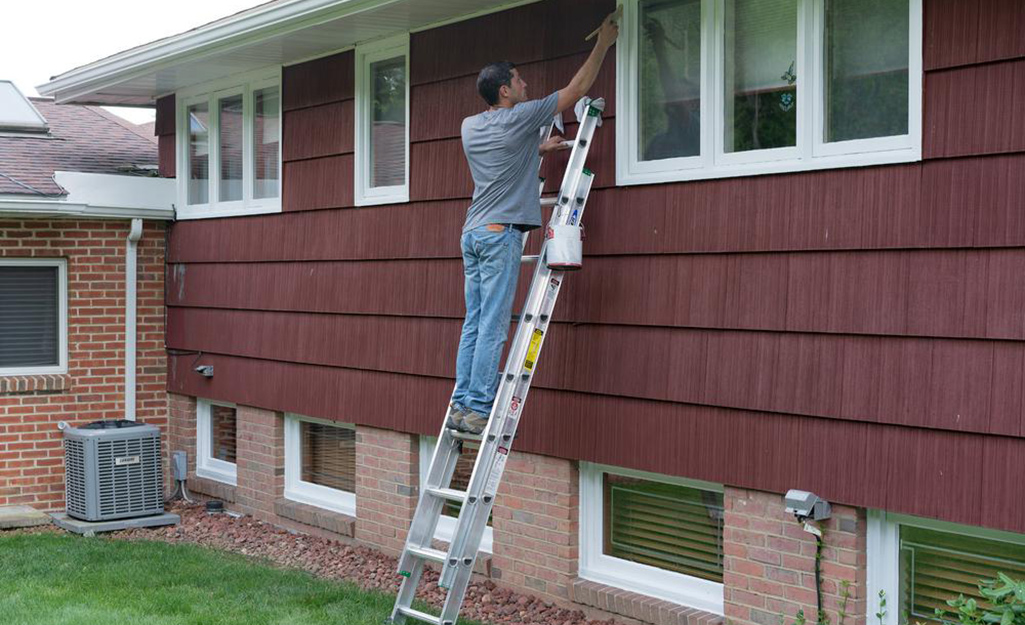
Extension ladders are a type of adjustable straight ladder. They can extend to various heights, making them ideal for many different high-reaching jobs. Like a typical straight ladder, extension ladders are used most often for outdoor projects. When choosing the best extension ladder for a project, consider the maximum reach you need, plus your storage capabilities. Because they can become shorter, they are often easier to store than straight ladders of the same maximum height.
Extension ladder height = Estimated reach above the ground:
- 16-foot ladder = 15-foot reach
- 24-foot ladder = 23-foot reach
- 28-foot ladder = 27-foot reach
Attic Ladders
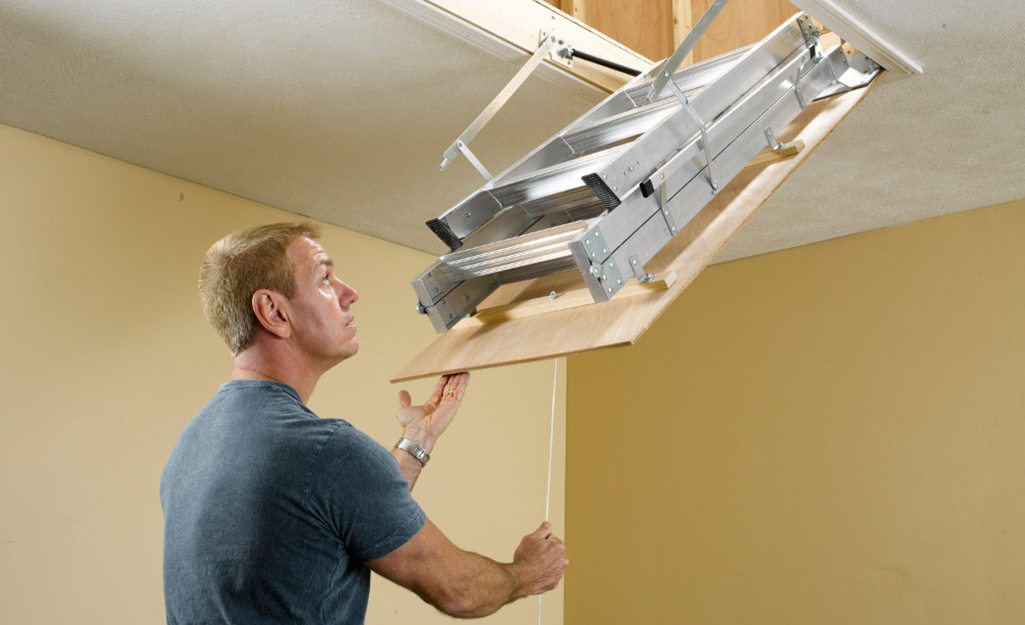
Attic ladders are retractable ladders that lead up to the attic and usually come with your home. They are available in sizes that can fit ceiling heights of seven to nine feet, 10- to 12-feet or over 12-feet.
When choosing
an attic ladder
to install, know the height of your ceilings and the ladder weight capacity you'll need.
Step Stools
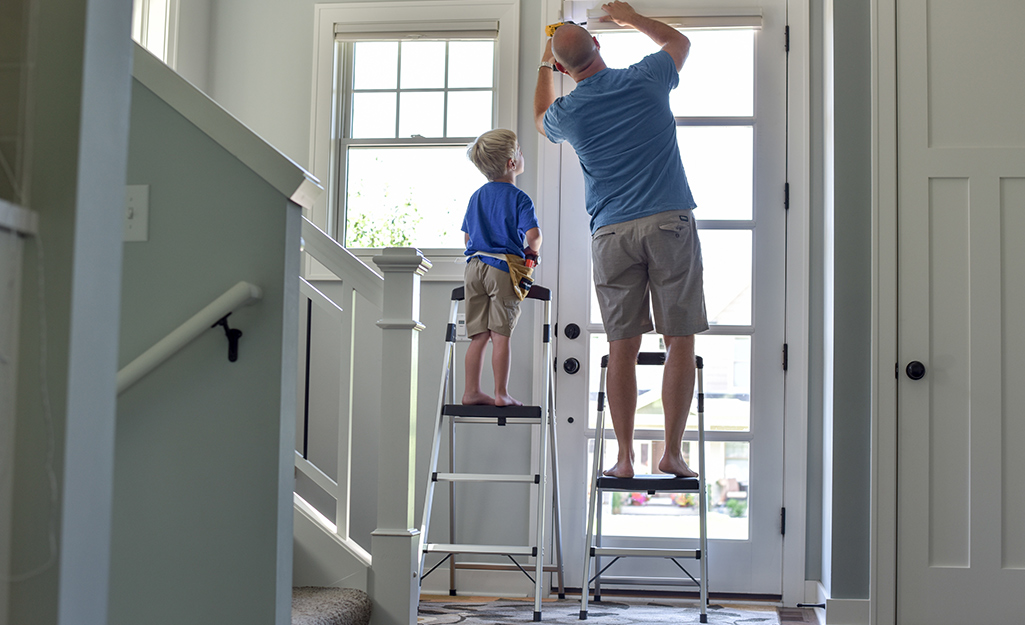
Step stools are compact, easy-to-store step ladders that are used for everyday tasks. They’re best for helping you reach high cupboards and shelves. They are available with one, two or three steps.
Fire Escape Ladders
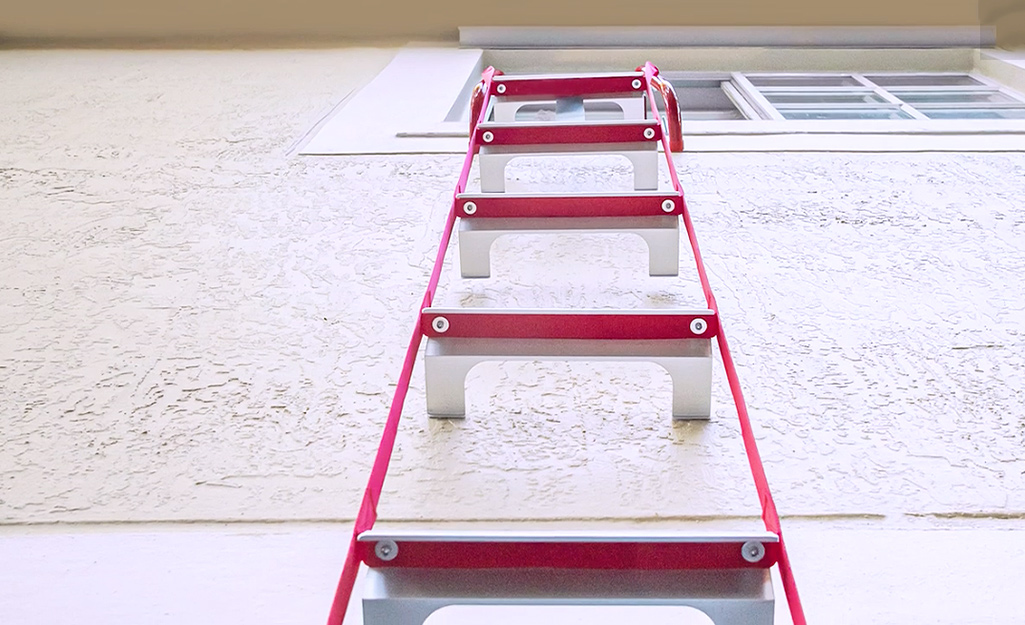
Fire escape ladders can be rolled up and stored in bedrooms to help escape in the event of a fire or other emergencies.
Telescoping Ladder
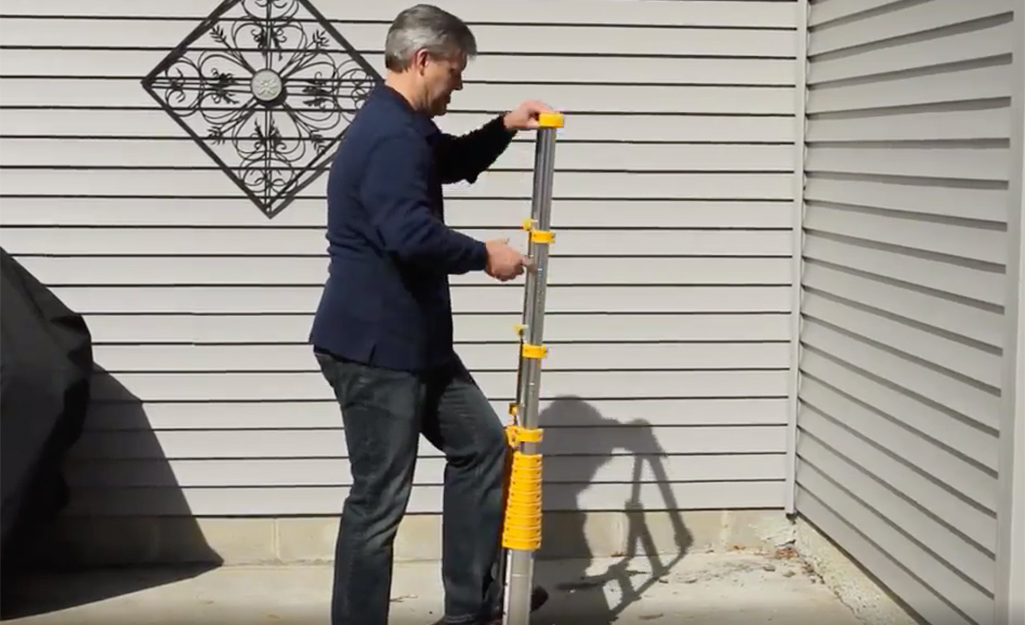
A telescoping ladder features a system that extends to full height when needed and retracts back into a compact form for storage. The best telescoping ladders can
be used as a twin step ladder, an extension ladder, a stairway step ladder or two scaffold bases. The more you extend this type of ladder, the higher and heavier it gets. The weight of these ladders is dependent on the height. The maximum height of most telescoping ladders is 14 1/2-feet.
Ladder Materials
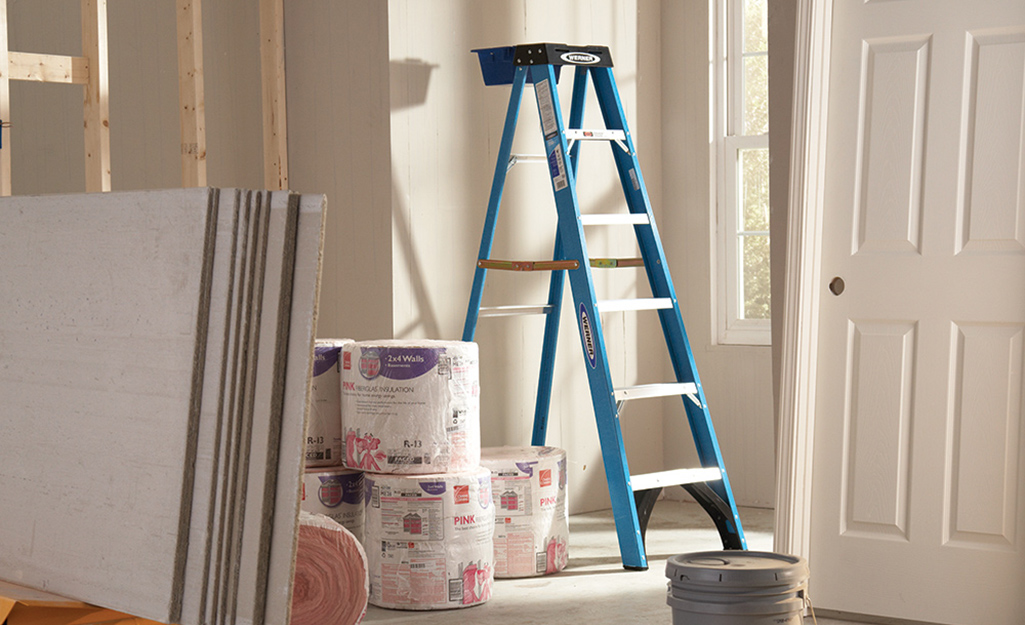
Make sure your ladder is
made of a material appropriate for your job. Choosing the correct ladder material for your job is extremely important for the completion of your job and for your safety.
Most ladders are constructed of aluminum or fiberglass, while some are constructed of wood.
Aluminum ladders are lightweight, making them easy to transport, and are non-corrosive.
Since they’re lightweight, these ladders are great for using around the home for painting jobs.
They can be used indoors or outdoors. However, they should never be used near power lines or electrical wiring because they conduct electricity. Using this type of ladder around electricity is a serious safety hazard and can
endanger your life.
Fiberglass ladders are non-conductive, so it's safe to use them near power lines and electrical wiring. They are also durable, weather-resistant, flame-resistant and built to last many years. Because fiberglass ladders are so durable, resistant to the elements and heavier than aluminum ladders, you will feel increased stability when using them.
They can be used indoors or outdoors.
Wood ladders are also non-conductive, but some are made with metal fasteners, making them unsuitable for power lines or electrical work. Wood can rot when exposed to water, so do not use them outdoors in wet weather. Be sure to store wood ladders in a dry and protected area.
Leave them unpainted so that any defects or damage
won’t go unnoticed.
Ladder Duty Ratings
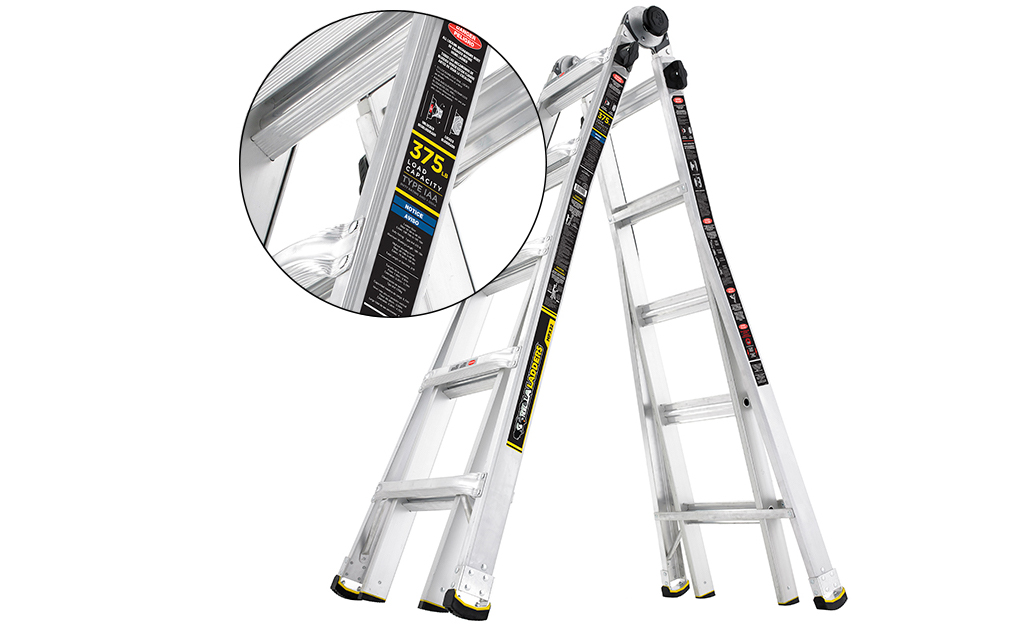
The ladder duty rating was created to ensure that DIYers use the correct ladder for the correct job. The ladder duty rating is separated into types that indicate the weight limit of each ladder and its appropriate usage. For example, you wouldn't use a Type 3 ladder for a job that requires a Type 1AA ladder. Type 3 is a basic ladder made for light or household duty, while Type 1AA is meant for professional use.
Look for the duty rating information posted directly on your ladder to ensure it is a good match for your needs. Also make sure that the weight of the user plus the materials being brought up the ladder is less than the specified weight capacity.
Be careful when using twin step ladders and multi-position ladders. Twin step ladders are built for two individuals to use, so be aware of the duty rating and weight limitations of both individuals as well as the materials being used. A multi-position ladder's duty rating will vary depending on how you've adjusted your ladder. Make sure it's in the right position for the job at hand.
Ladder Duty Ratings Chart
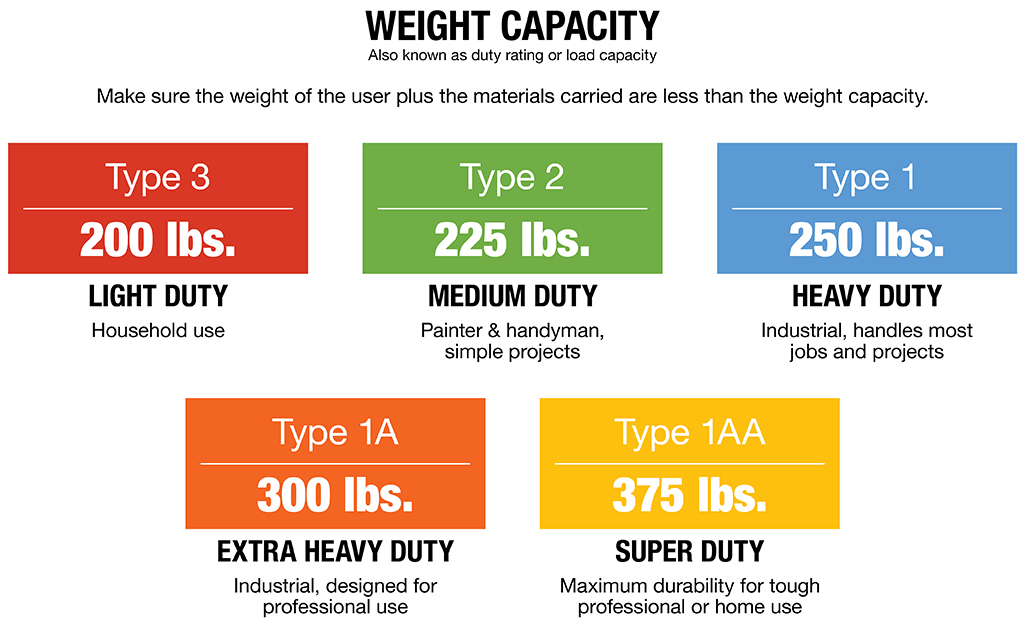
- Type 3: Maximum weight of 200 lbs., light duty (household use)
- Type 2: Maximum weight of 225 lbs., medium duty (painter and handyman, simple projects)
- Type 1: Maximum weight of 250 lbs., heavy duty (industrial, handles most jobs and projects)
- Type 1A: Maximum weight of 300 lbs., extra heavy duty (industrial, designed for professional use)
- Type 1AA: Maximum weight of 375 lbs., super duty (maximum durability for tough professional or home use)
Determine which ladder to use by accounting for
the approximate weight of the common items you'd need carry up a ladder. Add the weight of these items to your own weight to get an estimate of the maximum weight your ladder should be able to handle.
- Portable sprayer: 20 lbs.
- Ceiling fan: 30 lbs.
- Toolbox with tools: 35 lbs.
- Garage door opener: 40 lbs.
- 5-gallons of paint: 60 lbs.
- Basketball hoop: 60 lbs.
- Bundle of shingles: 70 lbs.
- 5-gallon roof coating: 70 lbs.
- 3- x 4-foot window: 80 lbs.
- Sheet of plywood: 80 lbs.
- Three 4- x 4-foot lumber boards: 80 lbs.
Ladder Features
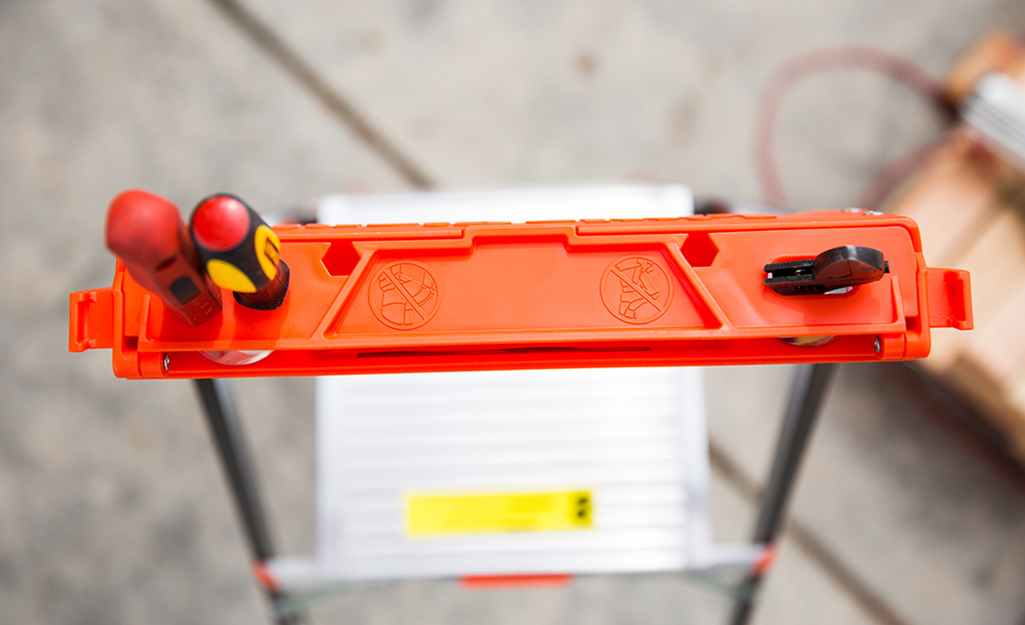
- Ladders with a flared base, or a base that extends farther out than typical ladders, offer extra support and stability.
- Extension ladders and ladders that can be adjusted have locks that ensure your safety.
- Ladders with slip-resistant rungs or steps help prevent accidents.
- Ladder height is important depending on your project. If your project is on the roof, for example, consider an extension ladder, a multi-position ladder or a platform ladder. If you simply need to reach a kitchen cabinet, a step stool may do.
Ladder Safety
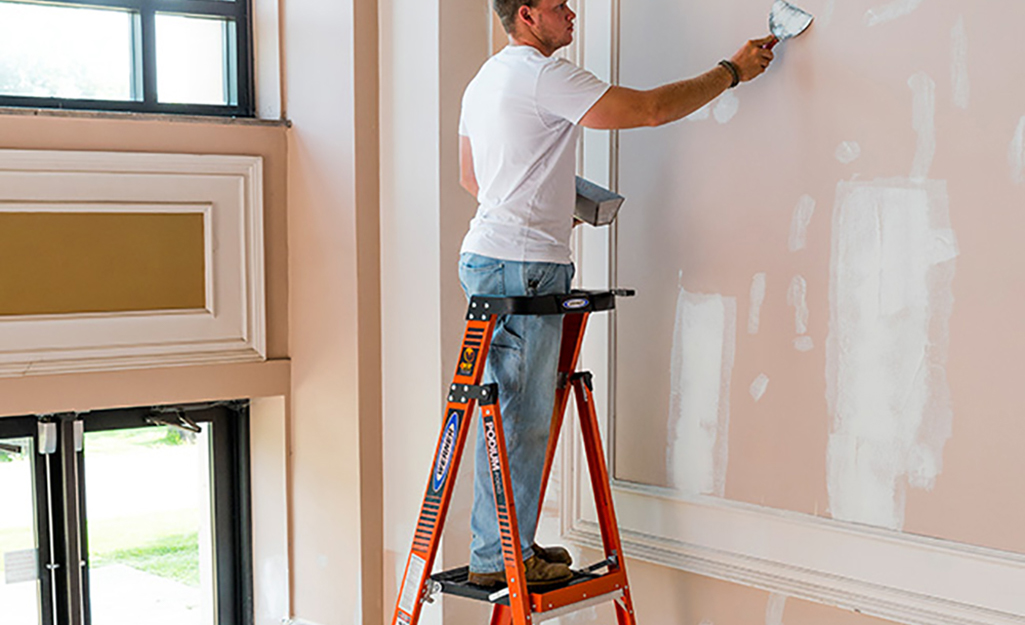
Each year, thousands of people are injured in falls and other accidents involving ladders. Take precaution by following these safety guidelines.
General Safety
- When climbing a ladder, face the ladder with your body centered between the rails and maintain three points of contact (both hands and one foot, or two feet and one hand).
- Do not lean off the side of the ladder.
- Wear shoes with non-slip soles.
- Make sure your body is centered while working on a ladder.
- Don't skip steps when climbing down a ladder.
- Don't stand above the highest level of the ladder.
- Carry tools and materials in a belt, apron or pouch.
- Use a rope and bucket to pull up large, heavy or awkward items.
- Regularly inspect ladders for loose rungs, dents, cracks or sharp edges.
- Don't use a ladder that has been damaged or appears unsafe.
- Observe duty ratings that are posted on the ladder, which include weight limitations for each type of ladder.
- If you're dealing with electricity, use a fiberglass ladder.
- Make sure your ladder meets OSHA regulations and that you follow safety guidelines when using a ladder.
Ladder Setup
- Only use a ladder on a solid, level surface.
- Make sure step ladders are completely open with hinges locked.
- Double-check that locks are secured on a ladder that is adjustable or able to extend.
- Refer to the ladder height and reach for each ladder to ensure you're using the correct ladder for the job.
- Use two people to safely carry a long ladder.
- When carrying an extension ladder, the center should be balanced, resting on your shoulder with your arm through the ladder.
Outdoor Safety
- Don't use a ladder in high winds. For other severe weather, if you still need to go up the ladder, have another person hold the ladder for security.
- Do not use ladders on ice or snow or if they are wet.
When searching for a new ladder, there’s more to consider than just the type of ladder. Whether you’re trying to find the best step ladder, best extension ladder or best telescoping ladder for your DIY projects, remember to search for the appropriate material and duty rating.
Need help identifying a tool or material? Find products fast with image search in The Home Depot Mobile App. Snap a picture of an item you like and we'll show you similar products.


